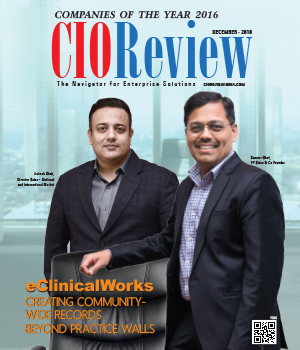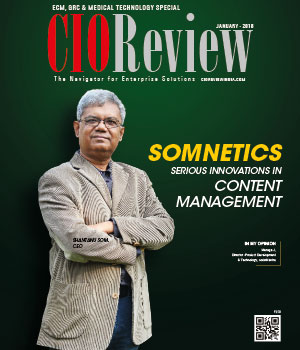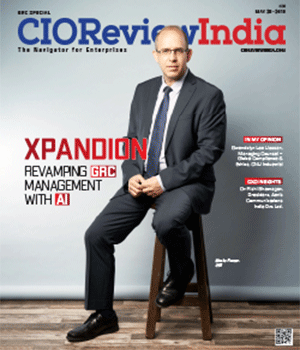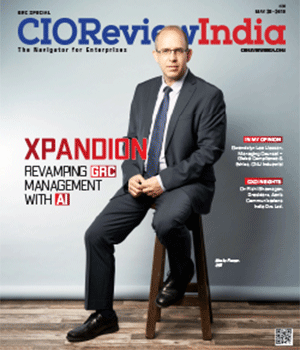
Integration with Industry - leading Cloud Orchestration and SDN Platforms
Hayato Koeda, President & CEO A10 Networks KK and Vice President of South APAC, A10 Networks KK | Tuesday, 28 March 2017, 06:24 IST
 Enterprises’ massive transitions to cloud technologies have given a significant impact on the way technology is managed, purchased, deployed, planned and charged. To improve customers’ business agility and lower total cost of ownership, cloud service providers such as Infrastructure-as-a-Service (IaaS) cloud data center operators, service providers, and traditional Telco companies are looking to create highly scalable, flexible, and efficient cloud infrastructure, that fulfills the criteria for next generation data center and deliver additional performance and advanced features to their customers.
Enterprises’ massive transitions to cloud technologies have given a significant impact on the way technology is managed, purchased, deployed, planned and charged. To improve customers’ business agility and lower total cost of ownership, cloud service providers such as Infrastructure-as-a-Service (IaaS) cloud data center operators, service providers, and traditional Telco companies are looking to create highly scalable, flexible, and efficient cloud infrastructure, that fulfills the criteria for next generation data center and deliver additional performance and advanced features to their customers.
Traditionally, legacy data center network architectures have been static, inflexible and manually provisioned, placing them out of sync with emerging cloud data center business models, whose automatically provisioned services are able to increase business agility and reduce significantly the cost of operations.
Software-defined-networking (SDN) and network functions virtualization (NFV) are key emerging technologies expected to change the paradigm. Many cloud service providers are in trials with these new technologies and running proof of concept (POC). However, network virtualization is just one piece of the puzzle. What they should look for is not just network virtualization solution, but more comprehensive cloud services architectures; upon which they can build cloud infrastructure, allowing integration of compute, storage and network services.
Working in concert with data center orchestration and SDN/NFV solutions, the new architectures include flexible choices of form factors and new licensing options and enable subscription-based, dynamic Layers 4-7 (L4-7) security and application services in multi-tenant cloud data centers. Layers 4-7 are network-independent, higher-level functions, while SDN/NFV can change L4-7 network services by enabling virtual applications of load balancing, WAN acceleration and virtual security appliances that are running on common servers.
Integrations with industry-leading cloud orchestration and SDN platforms enable physical and virtual appliances to provision L4-7 network services per tenant network flow dynamically and automatically; the new model offers feature integration with platforms such as AmazonWeb Services (AWS), Cisco Systems ACI, IBM SDN VE, OpenStack, and Microsoft Windows Server Hyper-V Network Virtualization and Microsoft System Centre Virtual Machine Manager. For example, Cisco has integrated infrastructures to deliver integrated and automatically provisioned layer 4-7 network services within the ACI fabric. New integration technology enables its joint data center customers to implement a single network policy via the Cisco APIC controller to ensure network security, QoS, and other network services from a central, automated orchestration system.
Microsoft also has introduced Hyper-V Network Virtualization and cloud services architecture builds on this capability and Microsoft System Centre Virtual Machine Manager to enable data center administrators to rapidly and centrally provision, manage, and monitor application delivery controllers (ADCs) in virtual and physical appliance form factors and their user policies. The company is helping operators lower total cost of ownership through automation, centralized management and monitoring, and improve service velocity.
In addition, ADC vendors have come to provide new architectures that integrate high-performance application networking solutions to ensure data center applications and networks remain highly available, accelerated and secure. Specific products support VXLAN and NVGRE, and enable perimeter functions per tenant, providing encapsulation/de-capsulation for overlay network virtualization; virtualized and hybrid appliances that provide distributed service scale out per tenant including ADC and Carrier Grade Networking (CGN); and pay-as-you-go licensing options that deliver flexible IaaS service pricing models.
Taking advantage of comprehensive, high-performance, flexible and agile solutions for automated service provisioning, leading cloud service providers have adopted these architectures and added rich L4-7 services to public and private clouds to help customers to grow revenue and respond quickly and cost-effectively to market requirements. Australian hosting service provider, Micron21 has implemented a pay-as-you-grow cloud platform using ADCs that was simple and easy to set up and deploy. With an all-inclusive pricing model, they are able to achieve quick return on investment and greater profits by increasing their product portfolio. Clients are able to add services on the fly, which can scale up and down to meet any requirement. The platform operates within a highly redundant environment ensuring customers receive on-demand world-class application delivery services, including WAF, GSLB and DDoS Protection while maintaining little financial impact.
As enterprises adopt cloud technologies to solve various issues of IT consumption, cloud service providers face the need to create next-generation data center architectures to achieve automation, business agility, and reduced operational costs to meet their goals to help customers to grow revenue and respond quickly and cost-effectively to market requirements. While SDN and NFV markets are currently focused on network virtualization, cloud orchestration technologies are in a more advanced stage, which allow to solve broader business issues for customers in terms of on-demand resource provisioning and business agility. It is recommended for operators to consider new cloud service architectures which encompass following features:
• High-performance appliances that perform a variety of resource-intensive functions, including encapsulation/de-capsulation, SSL (secure sockets layer) offload and DDoS (distributed denial of service) mitigation.
• Virtualized and hybrid appliances that provide distributed service scale-out down to the host and/or tenant.
• Pay-as-you-go licensing that allows cloud data center operators to offer a variety of subscription-based L4-7 network services to their customers.
• SDN and network virtualization platform integrations with leading data center solution providers, including Cisco APIC, IBM SDN-VE, and Microsoft Windows Server Hyper-V Network Virtualization, with planned integration with VMware NSX.
• Cloud orchestration integrations with leading orchestration platforms such as OpenStack and Microsoft Systems Centre Virtual Machine Manager.
CIO Viewpoint
Governance, Risk and Compliance (GRC)
By Anil Ranjan, Head IT, Macawber Beekay Private Limited
Technology Adoption in Multilingual Audio/Video...
By SC Mittal, Sr ED (MS&IT) & Group CTO, IFFCO
Healthcare IT Solution Delivery and the Cloud
By Arvind N Sivaramakrishnan, CIO, Apollo Hospitals
CXO Insights
By Suresh V Menon, Principal Consultant, Six Sigma and Strategic Management
GDPR and the Right to be Forgotten: Lessons for...
By By Milind Borate, CTO, Druva
A Practical GRC Solution for a Metals Enterprise










